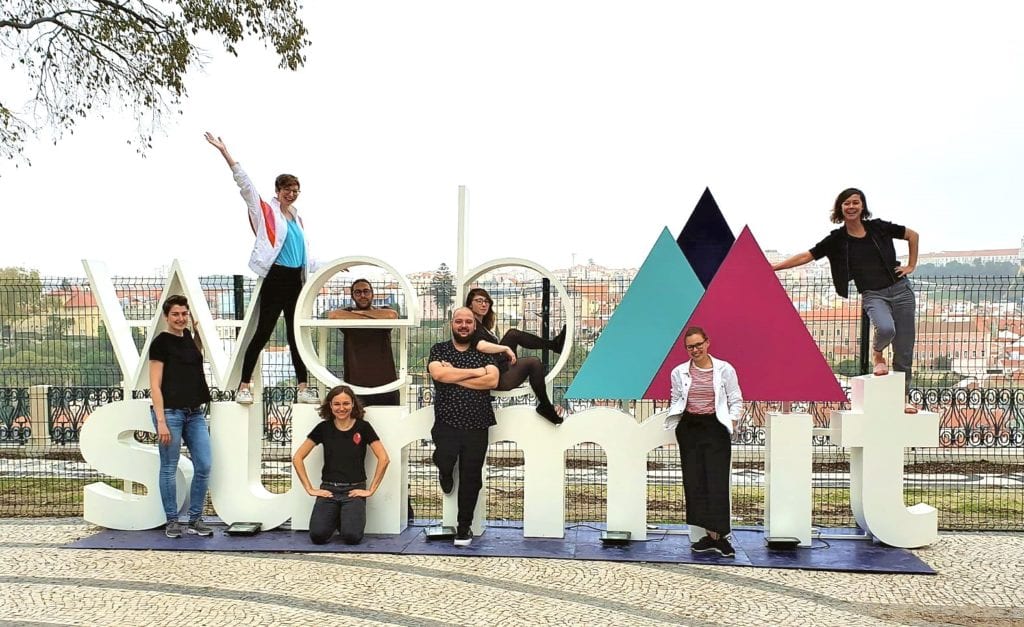Nine days, eight creative minds, one experiment. Last week our colleagues from Germany set up camp with a pop-up agency in Lisbon while reporting live-and-direct from Web Summit, one of the biggest tech conferences in Europe. The team worked with clients on the ground, tested new forms and methodologies of communications and collaboration, and collected insights from the debates and discussions taking place on the Web Summit stage. Here are five Summit trends poised to influence the digital and communications landscapes in the months to come…

Immersive Entertainment Reaches Education:
Most notably, computer-generated characters (CG characters), which can now be generated without the use of special cameras or complex 3D software programs, are paving the way for new forms of computer-based learning. These character animations, once only a mainstay in the virtual worlds in gaming and entertainment, are now increasingly being used to usher in more immersive educational experiences around the world. One fascinating example at the intersection of immersive entertainment and education is the project “Fieldtrip to Mars,” a first-ever headset-free group virtual reality experience. Imagine a technology that enables every child to explore Mars, not alone in front of a PC or Mac, but as a VR experience set in an actual classic yellow school bus converted into a virtual classroom.
Synthetic Media Becomes Part of the Content Creation Process:
Synthetic media (digitally-generated content and personas created with the assistance of artificial intelligence) is changing the content creation landscape. These virtual influencers, often created with deep learning technologies, will not only shape influencer campaigns of the future – see, Lil Miquela – but will also become a fixture in the worlds of online advertising and TV. One example might be personalized artificial testimonials, adapted to individual preferences, to generate increased consumer loyalty. Fun fact: researchers at the Imperial Collage London are using the same underlying tech to investigate dark matter.
It’s the Brand Experience, Stupid!:
We are saturated with information and visual content, and it’s becoming more and more important for brands to create experiences that will be remembered – especially when it comes to maintaining relevancy with GenZ and Millennials. These can be digital and real-life experiences, or perhaps a little bit of both. At Web Summit, for instance, you could have your personal after-work cocktail mixed after a computer-based mood analysis. Pop-up stores are also gaining traction as a means to better connect young people with brands. The central role here is played by a well-trained sales and consulting team that creates a personal and interactive experience for the customer.
Sustainability Goes to Outer Space:
Sustainability is clearly one of the most important issues of our time and was an integral part of all thematic tracks at Web Summit. As a common denominator for politics, business and society, the United Nations Sustainable Development Goals (SDG) are becoming increasingly important. This was evident not only on stage, but also via colorful tiles showcasing the 17 sustainability goals that adorned many of the exhibition stands of both global and local companies. However, the sustainability debate did not stop here on Earth. More and more companies are determined to enter space in order to expand infrastructure and services. SpaceX, for instance, is in the process of launching Starlink, a network of more than 4,000 cross-linked satellites to provide the first space-based internet satellite network. The only problem, the growing amount of waste poses a serious threat to our current infrastructure and environment. This is the first time that there is a real business case for waste disposal in space, and the first start-ups are on the frontlines, and in the crosshairs, to address the problem.
Tech is Driving Inclusion:
Technology is increasingly helping humanity compensate for our physical limitations. The most vivid example from Web Summit were screens in front of each stage, where presentations and panels were transcribed live and instantaneously. Mind-machine interfaces, which translate muscle impulses into digital signals, was another hot Summit topic both as a means to expand the abilities of the healthy, and the impaired. In other words, the same technology enabling people with missing fingers to grasp a fork from a table, are allowing scientists to pick up a stone from the floor of Mars.



